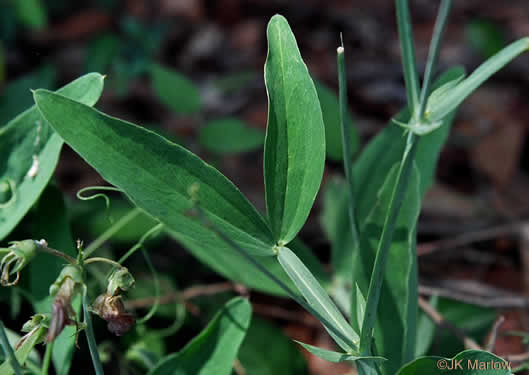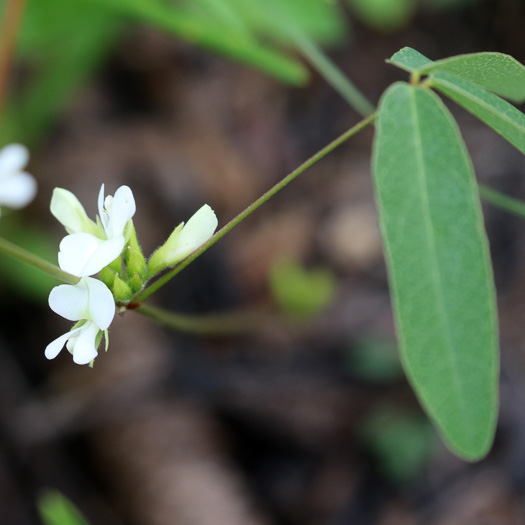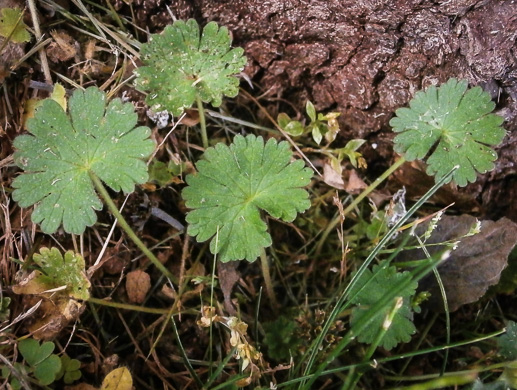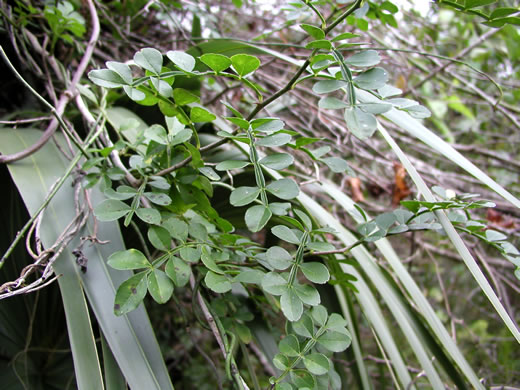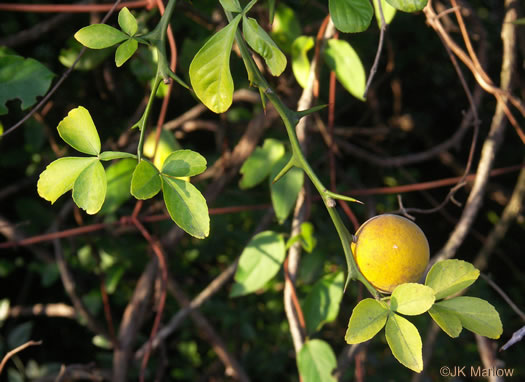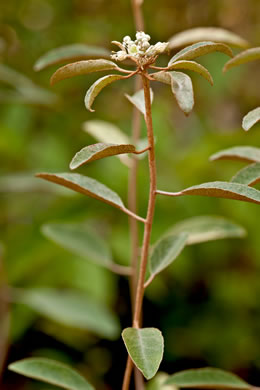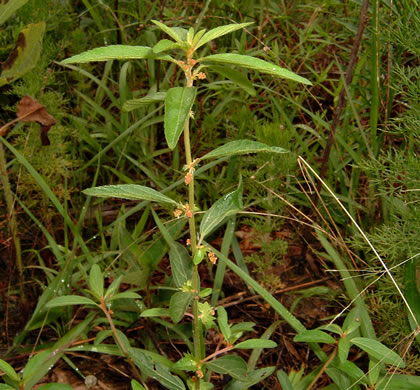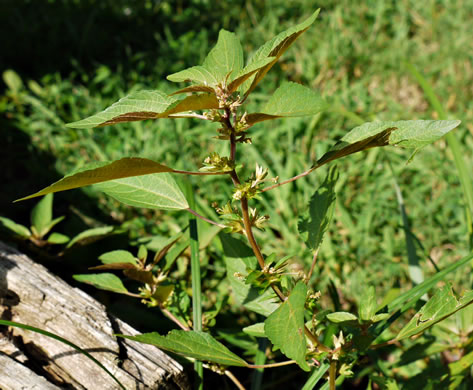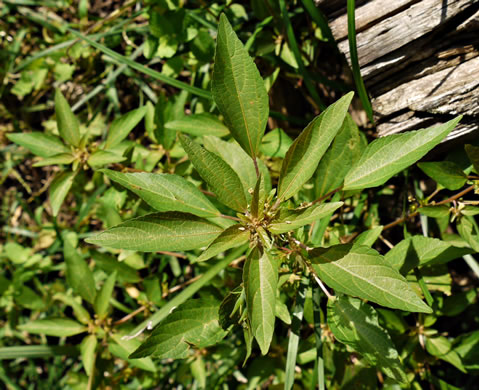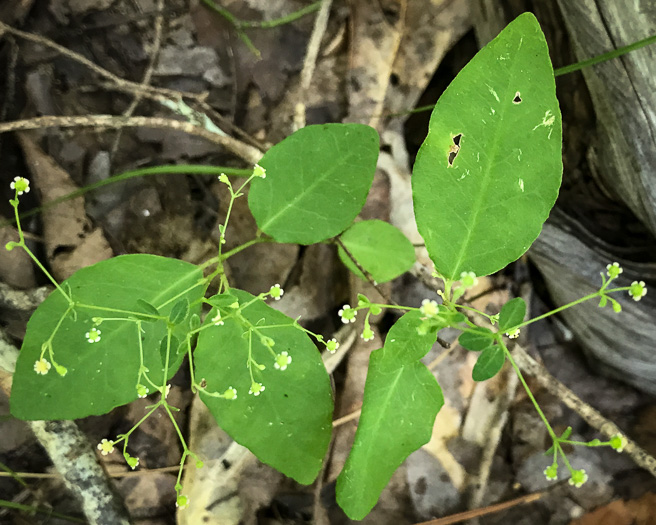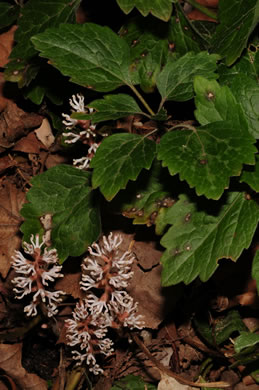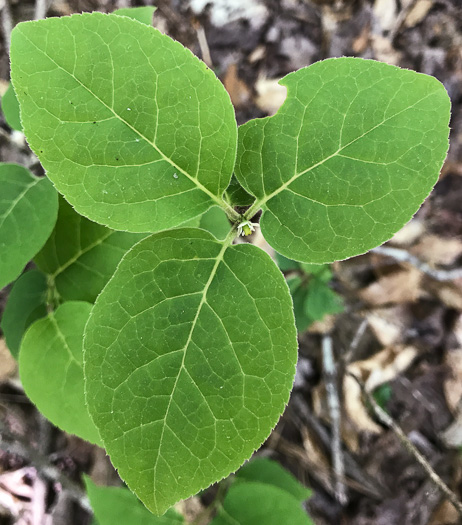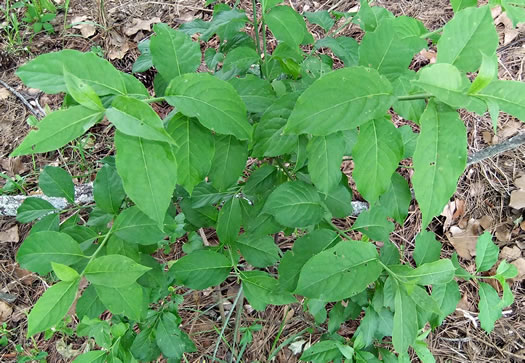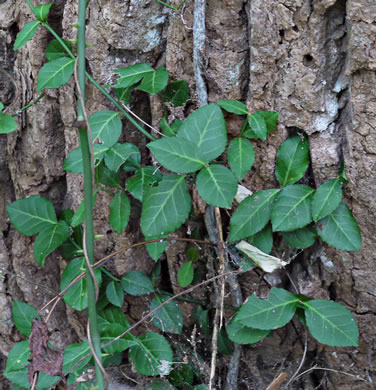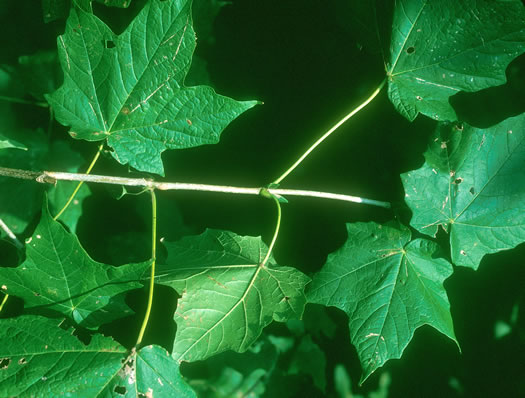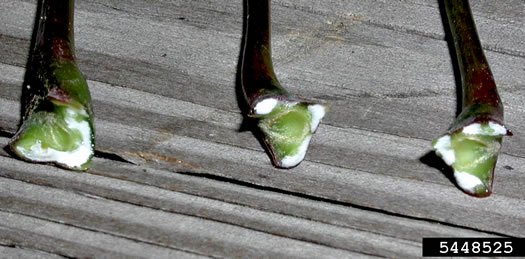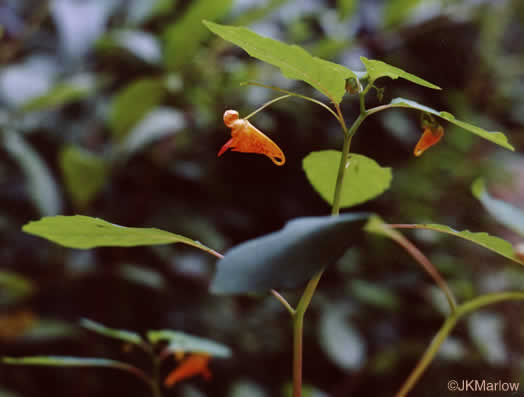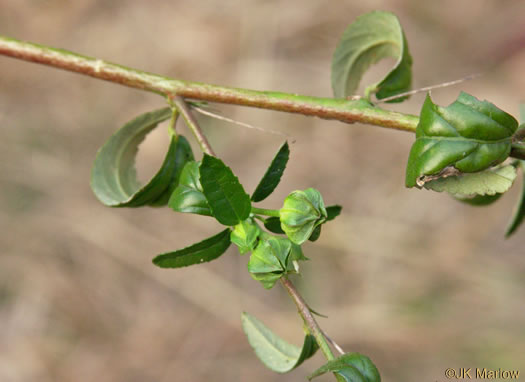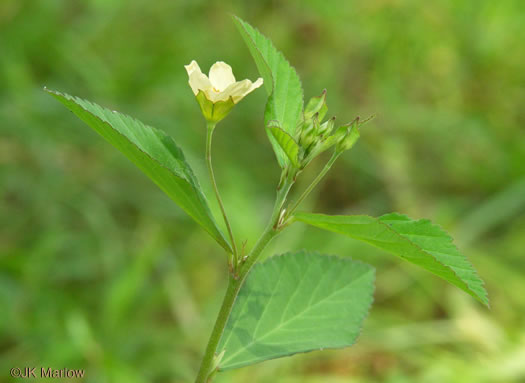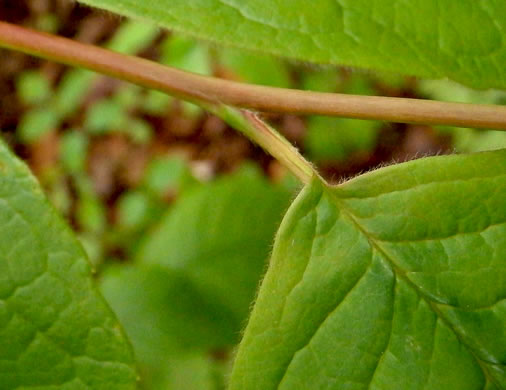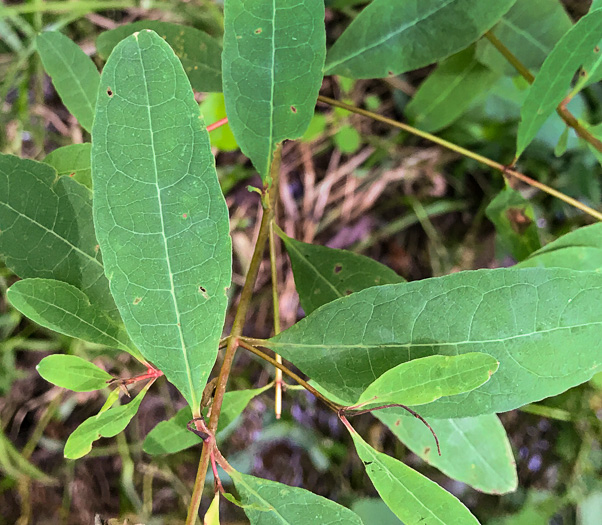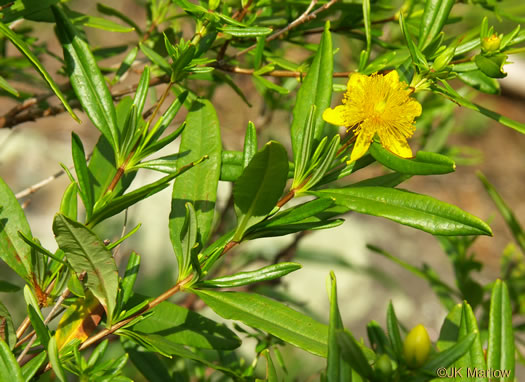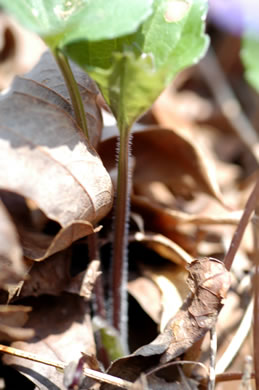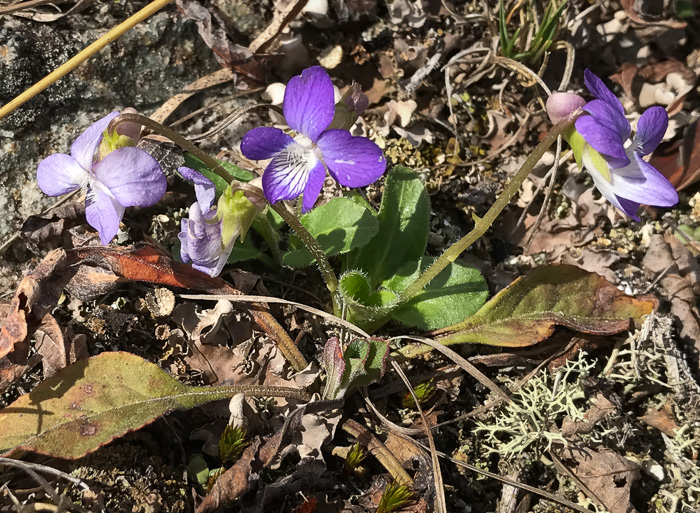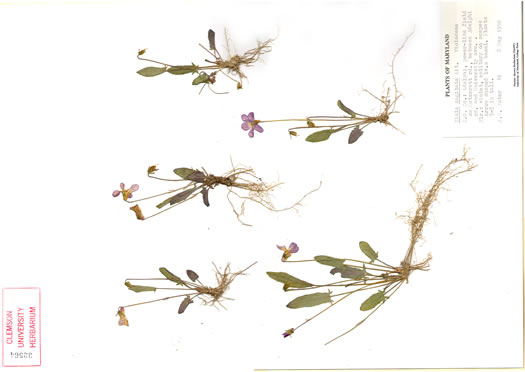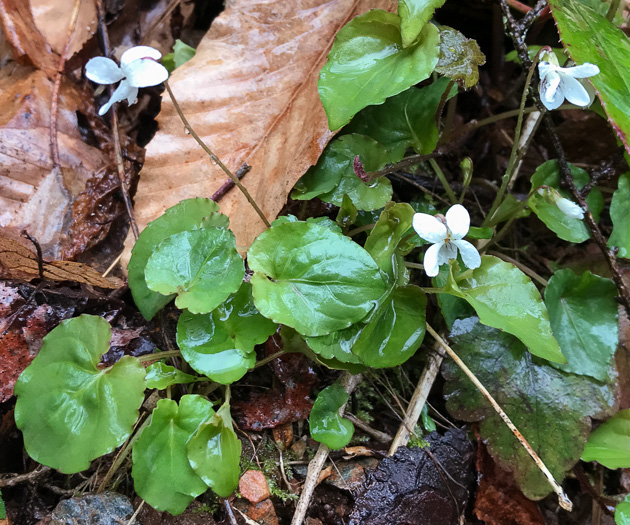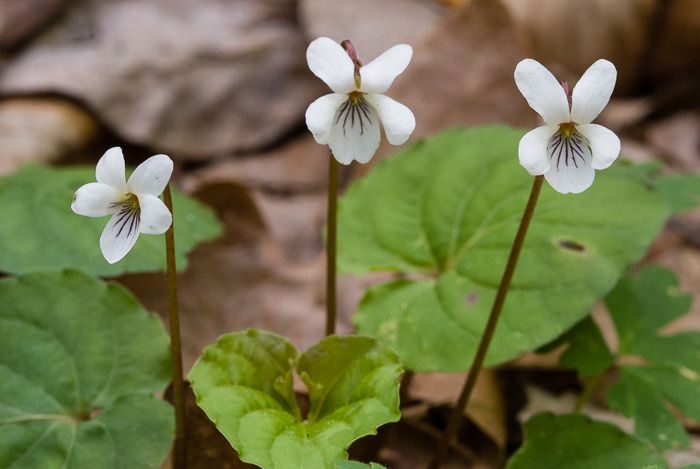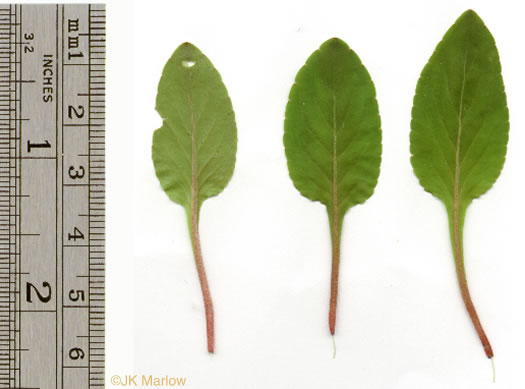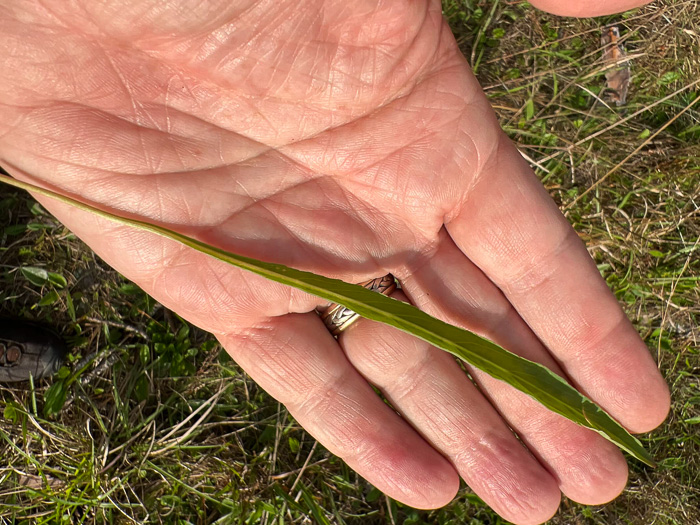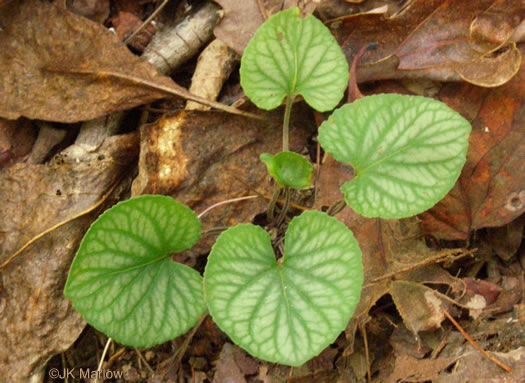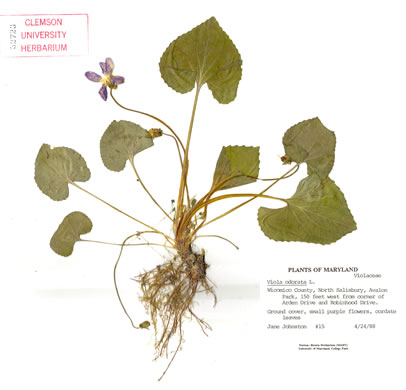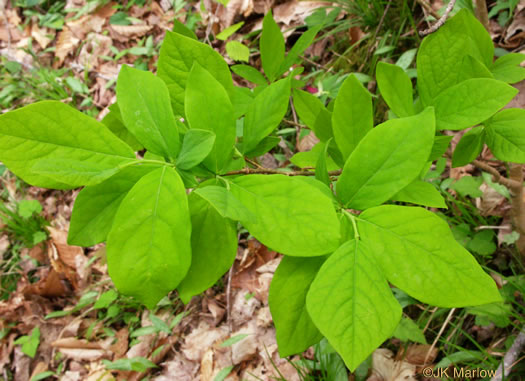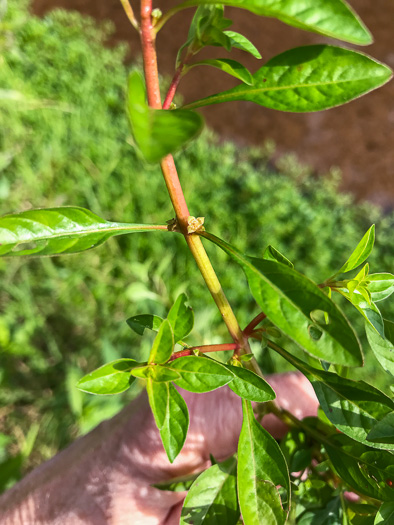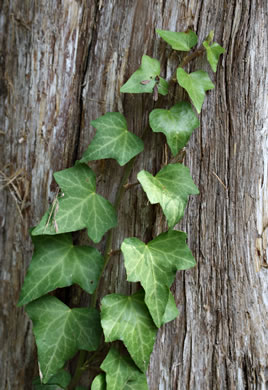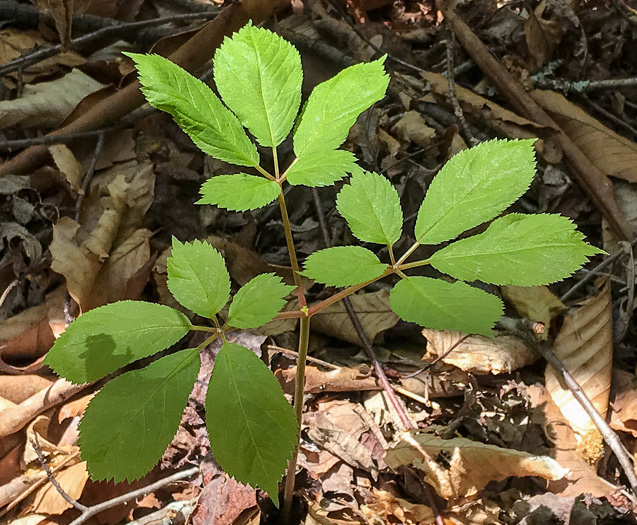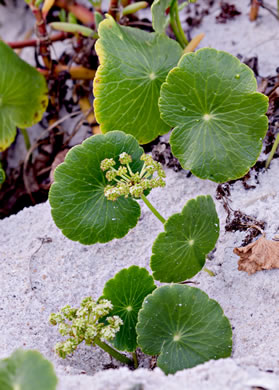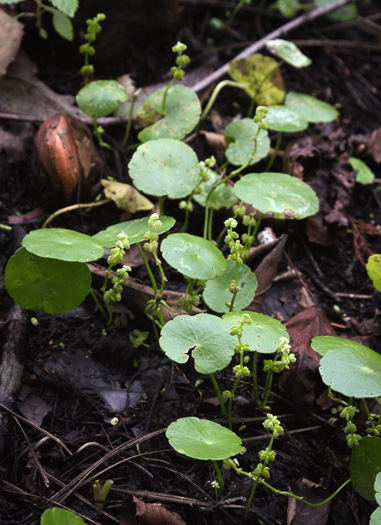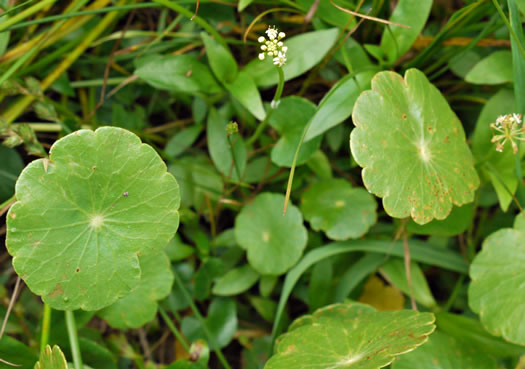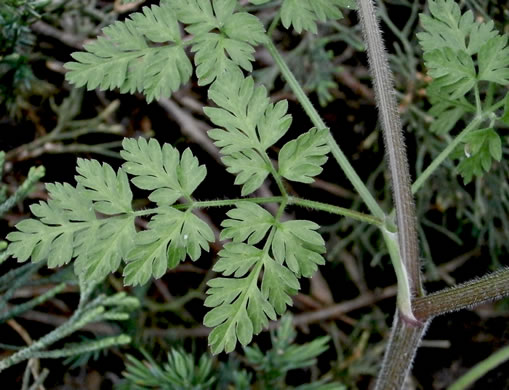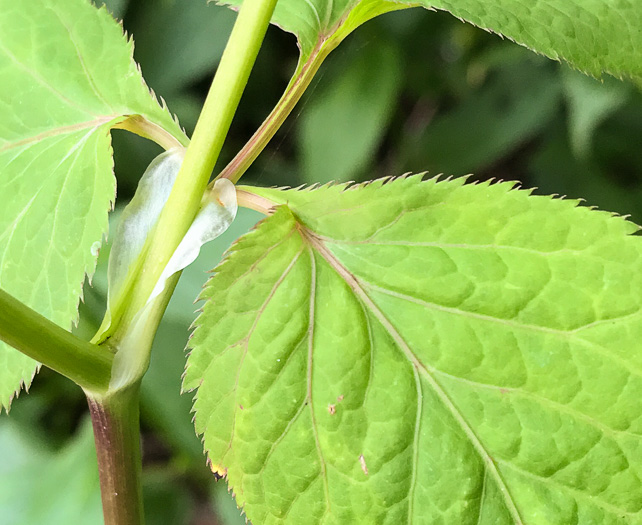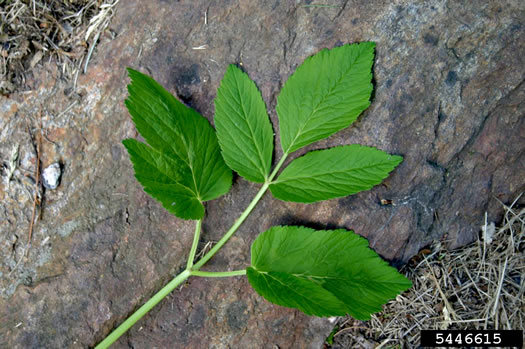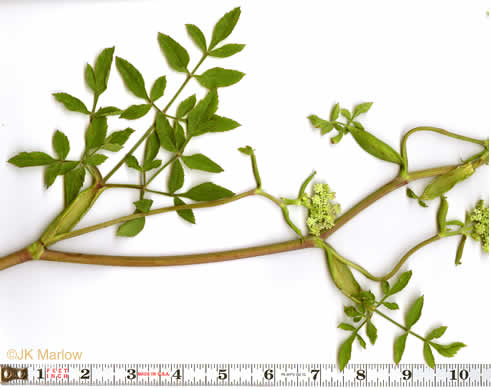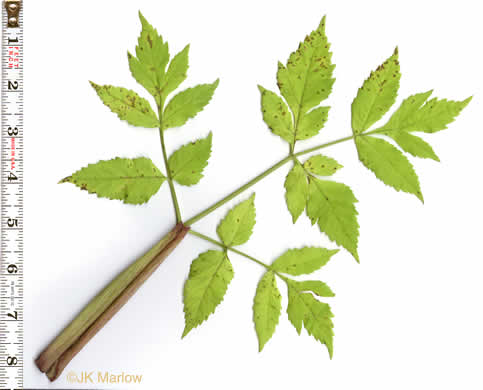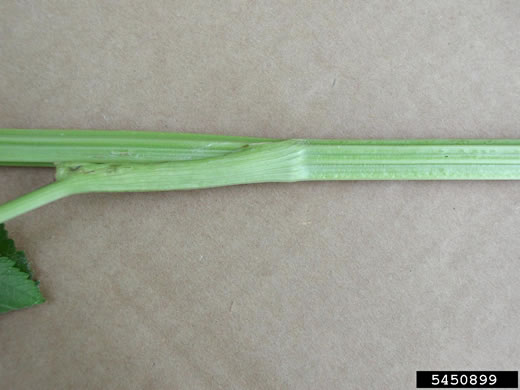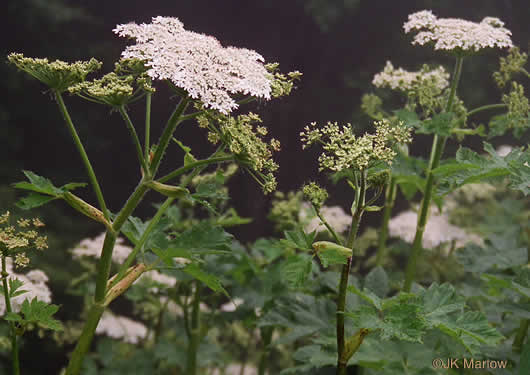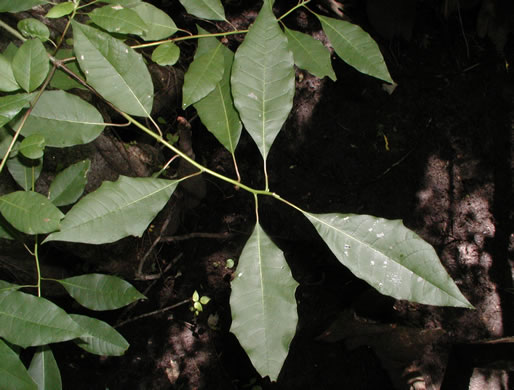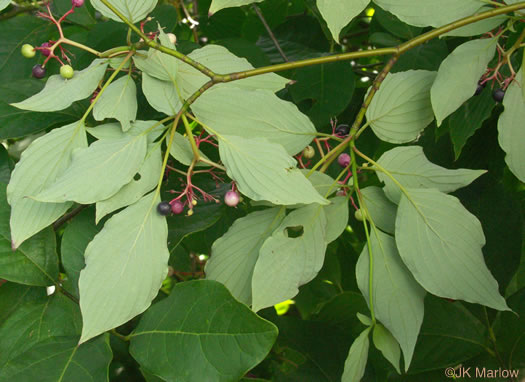Your search found 308 image(s) illustrating the term "petiole." For a written explanation, click on "petiole" in the Glossary.
PAGE 1 PAGE 2 PAGE 3 PAGE 4 PAGE 5 PAGE 6
To see larger pictures, click or hover over the thumbnails.
To go to the plant's detail page, click its name.
 Everlasting Pea,
Lathyrus latifolius
Everlasting Pea,
Lathyrus latifolius
Petioles broadly winged, per Vascular Flora of the Carolinas (Radford, Ahles, & Bell, 1968).
 Erect Milkpea,
Galactia erecta
Erect Milkpea,
Galactia erecta
Leaves rise above the axillary inflorescence on a long petiole. — Will Stuart
 Dove's-foot Cranesbill,
Geranium molle
Dove's-foot Cranesbill,
Geranium molle
Long petioles appear attached to center of the nearly round basal leaves, per Wildflowers of Tennessee, the Ohio Valley, and the Southern Appalachians (Horn, Cathcart, Hemmerly, & Duhl, 2005).
 Wild Lime,
Zanthoxylum fagara
Wild Lime,
Zanthoxylum fagara
Petiole & rachis winged; leaflets to 3cm long, apex rounded, obtuse, or retuse, per Weakley's Flora.
 Trifoliate Orange,
Citrus trifoliata
Trifoliate Orange,
Citrus trifoliata
Recognize it by its thorned branches, winged petioles, and 3 leaflets, per Trees of the Southeastern United States (Duncan & Duncan, 1988).
 Silverleaf Croton,
Croton punctatus
Silverleaf Croton,
Croton punctatus
Leaves ovate to ovate-lanceolate, 2-6cm long, 1-4cm wide, entire, petioles 1-3cm, per Vascular Flora of the Carolinas (Radford, Ahles, & Bell, 1968).
 Silver Croton,
Croton argyranthemus
Silver Croton,
Croton argyranthemus
Leaves with relatively long petioles (found in dry longleaf pinelands), per Weakley's Flora (2015).
 Slender Threeseed Mercury,
Acalypha gracilens
Slender Threeseed Mercury,
Acalypha gracilens
Stems erect, pubescent. Leaf petioles 0.2-1.2(-1.8)cm, per Flora of North America.
 Common Threeseed Mercury,
Acalypha rhomboidea
Common Threeseed Mercury,
Acalypha rhomboidea
Petioles of principal leaves 1-8cm long, per Vascular Flora of the Carolinas (Radford, Ahles, & Bell, 1968).
 Common Threeseed Mercury,
Acalypha rhomboidea
Common Threeseed Mercury,
Acalypha rhomboidea
Petioles of the larger leaves regularly more than half as long as blades, per Manual of Vascular Plants of NE US & Adjacent Canada (Gleason & Cronquist, 1991).
 Limestone Flowering Spurge?,
Euphorbia apocynifolia
Limestone Flowering Spurge?,
Euphorbia apocynifolia
These individuals have long petioles (0.4-1.2cm), oval to ovate leaves, short stature, ...
 Allegheny-spurge,
Pachysandra procumbens
Allegheny-spurge,
Pachysandra procumbens
1-5 fragrant flower spikes nestle at the base of a petiole , per All About South Carolina Wildflowers (Midgley, 1999).
 Carolina Holly,
Ilex ambigua
Carolina Holly,
Ilex ambigua
Petiole w U-shaped channel above, white appressed trichomes in the channel, per Weakley's Flora (2020).
 American Wahoo,
Euonymus atropurpureus
American Wahoo,
Euonymus atropurpureus
Petioles 8-20mm long, per Weakley's Flora (2012).
 Running Strawberry-bush,
Euonymus obovatus
Running Strawberry-bush,
Euonymus obovatus
Upper leaves widest at or beyond the middle; petioles mostly 3-5mm long, per Weakley's Flora (2012).
 Wintercreeper,
Euonymus fortunei
Wintercreeper,
Euonymus fortunei
Leaves broadly oval, moderately thick, with base tapering to petiole, per Nonnative Invasive Plants of Southern Forests (Miller, 2003).
 Black Maple,
Acer nigrum
Black Maple,
Acer nigrum
Usually a prominent stipule at petiole base (vs. not in A. saccharum), per The Native Maples of Georgia (Ware, 2003).
 Norway Maple,
Acer platanoides ssp. platanoides
Norway Maple,
Acer platanoides ssp. platanoides
Petioles of Norway maple exude a milky sap when broken (vs the native Sugar Maple's sap is clear), per New Invaders of the Southeast (Rawlins et al., 2018).
 Spotted Jewelweed,
Impatiens capensis
Spotted Jewelweed,
Impatiens capensis
The plant has a loose aspect due to its 4" petioles, per All About South Carolina Wildflowers (Midgley, 1999).
 Prickly Fanpetals,
Sida spinosa
Prickly Fanpetals,
Sida spinosa
The specific epithet refers to the short spine at the base of each petiole, per Wildflowers of the Southern Mountains (Smith, 1998).
 Arrowleaf Sida,
Sida rhombifolia var. rhombifolia
Arrowleaf Sida,
Sida rhombifolia var. rhombifolia
Peduncles many times longer than subtending petioles, per Vascular Flora of the Carolinas (Radford, Ahles, & Bell, 1968).
 Velvetleaf,
Abutilon theophrasti
Velvetleaf,
Abutilon theophrasti
Petiole 3-12 cm, stellate hairy, per Flora of China.
 Mountain Camellia,
Stewartia ovata
Mountain Camellia,
Stewartia ovata
Petiole winged, enclosing buds. Twigs brown, glabrous, per Woody Plants of the Southeastern US: A Winter Guide (Lance, 2004).
 Walter’s Marsh St. Johnswort,
Triadenum walteri
Walter’s Marsh St. Johnswort,
Triadenum walteri
Lvs mostly elliptic, to ~ 2-2.5" long, tip rounded, base rounded to tapered, petiole distinct, per Vascular Plants of North Carolina.
 Shrubby St. Johnswort,
Hypericum prolificum
Shrubby St. Johnswort,
Hypericum prolificum
Leaves 1-2" long, ~ 1/2" wide, narrowing into a very short grooved petiole, per Woody Plants of the Blue Ridge (Lance).
 Dooryard Violet,
Viola sororia var. sororia
Dooryard Violet,
Viola sororia var. sororia
About V. palmata var. sororia, "Pubescent or at least the petioles pubescent", per Vascular Flora of the Carolinas (Radford, Ahles, & Bell, 1968).
 Ovate-leaf Violet,
Viola fimbriatula
Ovate-leaf Violet,
Viola fimbriatula
Petioles, leaf lower surfaces, and peduncles ± hirtellous (rarely glabrous), per Weakley's Flora (2020).
 Arrowleaf Violet,
Viola sagittata
Arrowleaf Violet,
Viola sagittata
Petioles equal or longer than blades, per Weakley's Flora.
 Southern Coastal Violet,
Viola septemloba
Southern Coastal Violet,
Viola septemloba
Blades and petioles mostly glabrous, unlike the similar-looking V. palmata, per Vascular Plants of North Carolina.
 Wild White Violet,
Viola minuscula
Wild White Violet,
Viola minuscula
Leaf blades strictly glabrous (petioles may be glabrous or pubescent), per Weakley's Flora (2023).
 Sweet White Violet,
Viola blanda
Sweet White Violet,
Viola blanda
Petioles and peduncles red-tinged or -spotted; spotted; all petals glabrous, per Weakley's Flora (2023).
 Primrose-leaf Violet,
Viola primulifolia
Primrose-leaf Violet,
Viola primulifolia
Leaf blade tissue decurrent on the petiole, per Vascular Flora of the Carolinas (Radford, Ahles, & Bell, 1968).
 Strapleaf Violet,
Viola vittata
Strapleaf Violet,
Viola vittata
Leaf blades linear to linear-lanceolate, 8-15× as long as broad, tapering gradually to petiole, per Weakley's Flora (2022).
 Walter's Violet,
Viola walteri
Walter's Violet,
Viola walteri
Petioles, peduncles and stems moderately to densely puberulent, per Weakley's Flora.
 Johnny Jump-up,
Viola rafinesquei
Johnny Jump-up,
Viola rafinesquei
Leaves rounded with long petioles (1-3cm); stipules large, cleft and lobed, per Forest Plants of the Southeast and Their Wildlife Uses (Miller & Miller, 2005).
 English Violet,
Viola odorata
English Violet,
Viola odorata
Leaves basal (and from stolons), 5-10, ascending to erect; petiole 2-17cm, per Flora of North America.
 Eastern Leatherwood,
Dirca palustris
Eastern Leatherwood,
Dirca palustris
Leaves elliptic or oval, short-petioled, per Woody Plants of the Blue Ridge (Lance).
 Colombian Waxweed,
Cuphea carthagenensis
Colombian Waxweed,
Cuphea carthagenensis
Leaves opposite (none whorled); petioles to 8 mm long, often very short, per Weakley's Flora (2012).
 Pale Meadowbeauty,
Rhexia mariana var. mariana
Pale Meadowbeauty,
Rhexia mariana var. mariana
Leaves 3-nerved, short-petioled, hairy, typically 1-2" long & 1/3 as wide, per Wildflowers of Tennessee, the Ohio Valley, and the Southern Appalachians (Horn, Cathcart, Hemmerly, & Duhl, 2005).
 Common Water-purslane,
Ludwigia palustris
Common Water-purslane,
Ludwigia palustris
Reddish stems and ovate leaves up to 1" on long petioles, per Wildflowers of the Southern Mountains (Smith, 1998).
 English Ivy,
Hedera helix
English Ivy,
Hedera helix
Leaves dark green with whtish veins radiating from the petiole, per Nonnative Invasive Plants of Southern Forests (Miller, 2003).
 American Ginseng,
Panax quinquefolius
American Ginseng,
Panax quinquefolius
Long-petioled, palmately divided leaves in a whorl at the top of a smooth, solitary stem, per Wildflowers of the Atlantic Southeast (Cotterman, Waitt, & Weakley, 2019).
 Dune Pennywort,
Hydrocotyle bonariensis
Dune Pennywort,
Hydrocotyle bonariensis
Leaves peltate, orbicular to suborbicular, crenate, w petioles 7-20(30)cm long, per Vascular Flora of the Carolinas (Radford, Ahles, & Bell, 1968).
 Shield Marsh-pennywort,
Hydrocotyle verticillata
Shield Marsh-pennywort,
Hydrocotyle verticillata
Leaves peltate, lacking a sinus extending to the attachment of the petiole, per Weakley's Flora (2015).
 Whorled Marsh-pennywort,
Hydrocotyle tribotrys
Whorled Marsh-pennywort,
Hydrocotyle tribotrys
Peduncles shorter to longer than petioles, per Vascular Flora of the Carolinas (Radford, Ahles, & Bell, 1968).
 Lawn Marsh-pennywort,
Hydrocotyle sibthorpioides
Lawn Marsh-pennywort,
Hydrocotyle sibthorpioides
Lvs cleft to petiole (not peltate), 3-12mm wide, w 5-7 similar lobes, crenate, per Weakley's Flora.
 Centella,
Centella erecta
Centella,
Centella erecta
Leaves pubescent beneath; petioles lanate to glabrescent, per Vascular Flora of the Carolinas (Radford, Ahles, & Bell, 1968).
 Centella,
Centella erecta
Centella,
Centella erecta
Peduncles pubescent, shorter than the petioles, per Vascular Flora of the Carolinas (Radford, Ahles, & Bell, 1968).
 Southern Chervil,
Chaerophyllum tainturieri
Southern Chervil,
Chaerophyllum tainturieri
Petiole sheath ciliate, per Vascular Flora of the Carolinas (Radford, Ahles, & Bell, 1968).
 Heartleaf Golden-Alexanders,
Zizia aptera var. aptera
Heartleaf Golden-Alexanders,
Zizia aptera var. aptera
Basal leaves simple, long-petioled, w cordate base; stem lvs 1- or 2-ternate, per Wildflowers of the Southern Mountains (Smith, 1998).
 Honewort,
Cryptotaenia canadensis
Honewort,
Cryptotaenia canadensis
Upper leaves on short petioles dilated as far as the leaflets, per Manual of Vascular Plants of NE US & Adjacent Canada (Gleason & Cronquist, 1991).
 Goutweed,
Aegopodium podagraria
Goutweed,
Aegopodium podagraria
Leaves long-petioled, divided into leaflets
arranged in groups of three, per USDA Forest Service Weed of the Week (Northeastern Area).
 American Lovage,
Ligusticum canadense
American Lovage,
Ligusticum canadense
The petioles have narrow basal sheaths, per Wildflowers of the Southern Mountains (Smith, 1998).
 Hairy Angelica,
Angelica venenosa
Hairy Angelica,
Angelica venenosa
Upper petioles conspicuously expanded, per Vascular Flora of the Carolinas (Radford, Ahles, & Bell, 1968).
 Mountain Angelica,
Angelica triquinata
Mountain Angelica,
Angelica triquinata
Upper petioles conspicuously expanded, per Vascular Flora of the Carolinas (Radford, Ahles, & Bell, 1968).
 Parsnip,
Pastinaca sativa
Parsnip,
Pastinaca sativa
In the family Apiaceae, petioles are usually sheathing at their base, per Flora of China.
 Cow-parsnip,
Heracleum maximum
Cow-parsnip,
Heracleum maximum
The sheaths of the petioles expanded to as much as 2" wide, per Wildflowers of the Southern Mountains (Smith, 1998).
 Water Tupelo,
Nyssa aquatica
Water Tupelo,
Nyssa aquatica
Acuminate lvs, 1-2" petioles, & glabrous twig distinguish it from N. ogeche, per Native Trees of the Southeast, An Identification Guide (Kirkman, Brown, & Leopold, 2007).
 Ogeechee Tupelo,
Nyssa ogeche
Ogeechee Tupelo,
Nyssa ogeche
Leaves similar to N. aquatica; tips rounded to blunt; petioles less than 1", per Native Trees of the Southeast, An Identification Guide (Kirkman, Brown, & Leopold, 2007).
 Alternate-leaf Dogwood,
Swida alternifolia
Alternate-leaf Dogwood,
Swida alternifolia
Leaves are pale beneath and have long petioles, per Woody Plants of the Blue Ridge (Lance).

